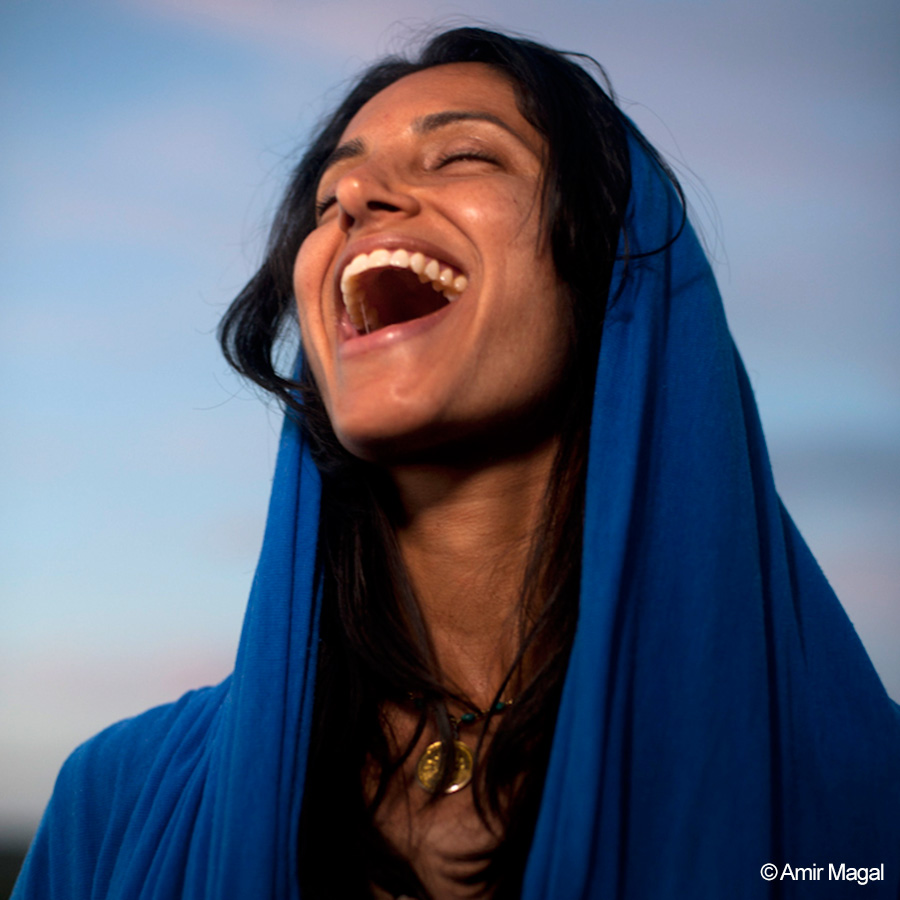[vc_row][vc_column width=”1/1″][vc_column_text]Yoga Journal, September 2011
by Shannon Sexton & Anna Dubrovsky
Buckle your bhakti belt! There’s a revolution under way in the land of American kirtan, and as yoga’s call-and-response form of devotional chanting evolves in fun and funky ways, it’s being wholeheartedly embraced by the yoga community and indie music fans alike. People whom you’d never expect to hang out singing chants to God have turned this type of traditional Indian chanting into the coolest form of music on the yoga block.
At a kirtan performance in Cleveland, Ohio, an electric bassist plays groovy, bluesy riffs to a chant called “Shiva Shambo” while a singer named Girish suggests that you “get up and shake your Buddha.” In Los Angeles, a dreadlocked dude named Joey Lugassy leads a Sanskrit chant to the Hindu deity Ganesha, then throws a pop-music curveball, weaving in a verse from the Beatles classic “Dear Prudence”. Under a hot-pink spotlight in the desert of Joshua Tree, California, during the Bhakti Fest kirtan extravaganza, Donna De Lory (who spent 20 years as a backup singer for Madonna) joyfully serenades the audience with mantra music and breaks into a sultry rap featuring Hindu names of the Divine Mother. A far cry from the dhoti-clad Indian temple singers who chant the names of God at ashrams and religious festivals, American-style kirtan wallahs (leaders) are reenvisioning—and perhaps reinvigorating—an ancient spiritual practice with the rhythms and grooves that were born on American soil. And although purists might argue otherwise, kirtan’s new generation of musicians believes that these genre-bending chants are still connecting our hearts to God—and spreading a compelling form of positive, spiritual music around the country and, increasingly, the world.
A Brief History
Although it’s difficult to trace the history of an oral tradition like kirtan, some scholars believe it emerged as a popular spiritual practice during the bhakti (devotion) movement that began in the 7th and 8th centuries and spread like wildfire between the 12th and 17th centuries. “Much of the kirtan explosion in America is inspired by what happened during that later time, and many of the songs we sing are inspired by music composed in that era,” says Russill Paul, a kirtan wallah in Austin, Texas, and the author of The Yoga of Sound.
“Through kirtan and other devotional practices, the bhakti teachers were echoing the fundamental premise of Patanjali’s Yoga Sutra, that spiritual realization does not require an external mediator. God is inside you. They used kirtan as a way to get in touch with God’s presence and showed everyday people that they could have the same levels of Self-realization and the same depths of mystical experience as a Brahmin performing sacred ritual or a yogi in deep meditation.” This approach was considered radical, he says: After thousands of years, the spiritual power of chanting was no longer guarded by a small elite; anyone could experience a love affair with God.
[/vc_column_text][vc_button title=”Read Full Article” target=”_blank” color=”btn-primary” icon=”none” size=”wpb_regularsize” href=”http://www.yogajournal.com/lifestyle/3116″]tricker[/vc_button][/vc_column][/vc_row]
